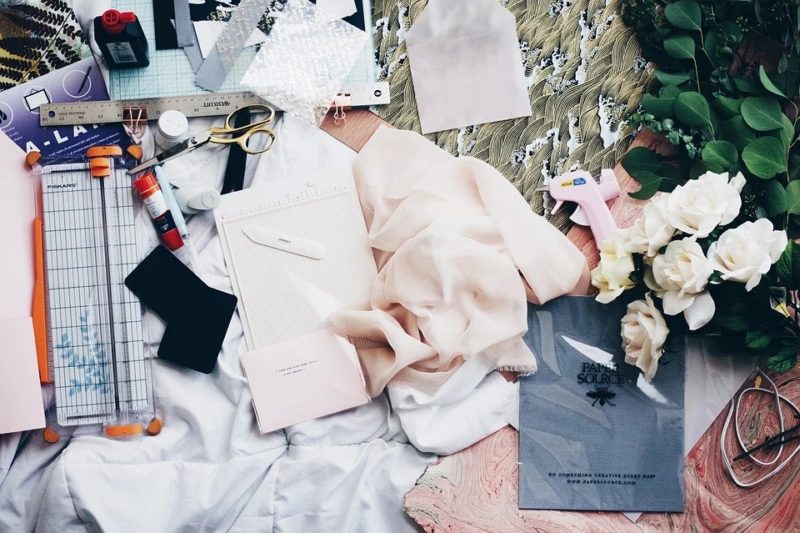The answer to what is a facing in sewing is that it’s a fabric you put at the fabric edge. And if you’re curious, we’ll discuss if it is different than interfacing. Expect that this article also encompasses how to sew in a facing, so you’ll be prepared when your project calls for one.
Are you relatively new to sewing? Then, you can also read about other terms in our blog. For example, we wrote articles like what is baste in sewing.

What Is Facing In Sewing?
Facing in sewing refers to the fabric you put on the raw edge of the material. It is often found in garments, particularly on the necklines, waistlines, and armholes. Sewing a facing in these areas will finish the edge to make it look neater and professional-looking.
The facing can also be the same fabric turned inside to finish the edges. However, it’s common to use another material because it will be shown outside. By having a facing around the holes and edges, they’ll be more accentuated and interesting.
Types of facing
Outside facing
The most common type of facing is the outside facing. From the name itself, it’s the facing that shows on the front of the garment. It is treated as a decorative finish for the edges.
Bias tape facing
Bias tape facing or hem facing is used to finish the hem and add some length to it. You can use a single-fold or double-fold bias tape for this. The sewer can also buy the bias tape or make one himself.
Shaped facing
Some garment patterns come with a pattern piece for shaped facing. It is so-called because it’s the same shape as the fabric edge, usually made with the same fabric as the clothing. It will also follow the grain of the garment.
Extended facing
Extended facing is the type added for garments that will be fastened. You use this to make the front or back of the project look neater. The pattern will dictate how to fold this facing to support the opening.
What Is Self Facing In Sewing?
Self facing in sewing refers to using the same fabric as the clothing for the facing. This facing is used to finish edges neatly without them looking too eye-catching compared to when you’d use another material, pattern, or color.
What Is A Straight Facing?
Straight facing refers to the facing that you cut on the fabric’s straight grain. You can also think of it as the facing used for straight edges. To understand the term ”grain” more, read what is grainline in sewing since sewers must know where to find it when cutting materials.
What Is The Purpose Of A Facing?
- For finishing the raw edges of the garment
- To make the seams look neater and professional-looking
- To accentuate certain parts of the clothing such as necklines and armholes
- For adding decorative interest to the garment
- For helping the clothing maintain its shape
- For strengthening the seam of the fabric
What Is The Difference Between Facing And Interfacing?
The difference between facing and interfacing is that facing is what you see along the garment edges. On the other hand, interfacing is not visible on the front of the garment because it’s between fabric layers. The facing in sewing is meant for finishing raw edges and strengthening the seam while also being decorative, while interfacing keeps the garment’s shape and prevents seams from stretching out.
Is interfacing essential for facing? Interfacing also helps maintain the facing’s structure, and the edges with the facing are less likely to get distorted. You can read about what is interfacing in sewing for more information.
Lining vs interlining
The lining is a lightweight material like silk attached at the facing or hem of the garment. Its purpose is to hide the interior details and make the clothing feel better against your body. This internal material also adds visual interest when you use another color or print than the garment.
What is interlining? Not to be confused with lining, the interlining is an extra material you put between the lining and outer fabric. The usual purpose is to add warmth, but it can also affect how the clothing drapes.
How Do You Sew In A Facing?
The following steps are for sewing shaped facing on the neckline of the garment:
- Put the facing over the garment right sides together and pin in place
- Mark the neckline on the interfacing and check if it’s on top and facing you before pinning the facing in place
- Sew the facing into the clothing along the neckline
- Cut the inside of the neckline and trim the seam allowance
- Clip the seam every half an inch and press it towards the facing
- Understitch the facing onto the seam
Conclusion
And that’s it! We just discussed what is a facing in sewing, and it reveals that it’s a fabric you use for raw edges of garments. As a result, the seams will be stronger, and you’re also decorating the openings like neck holes on clothes by adding a facing around them.
We hope you learned a lot. Feel free to browse our blog for various sewing terms such as what is welting in sewing and more.
